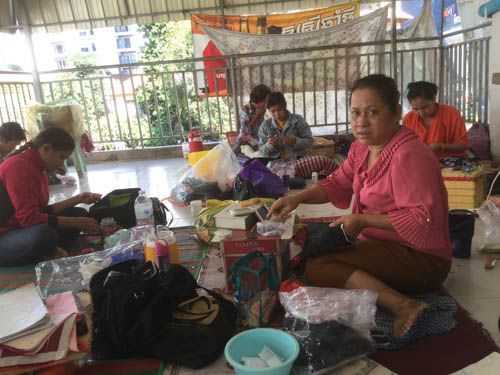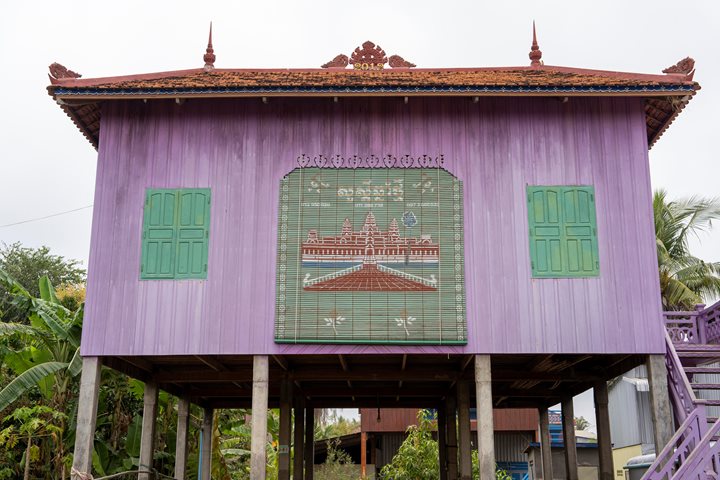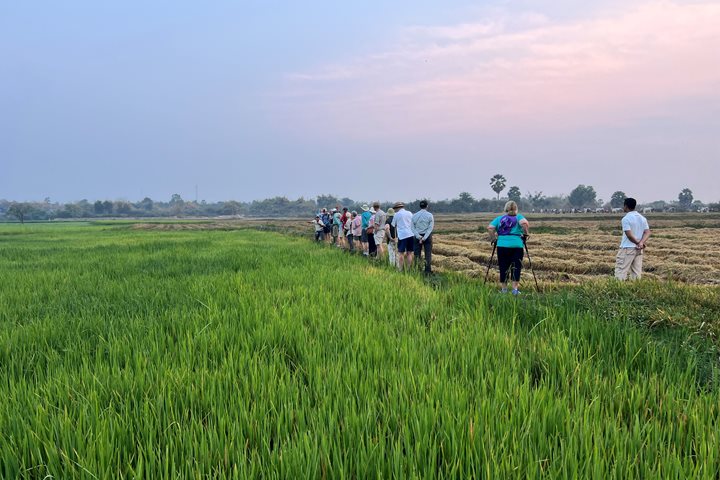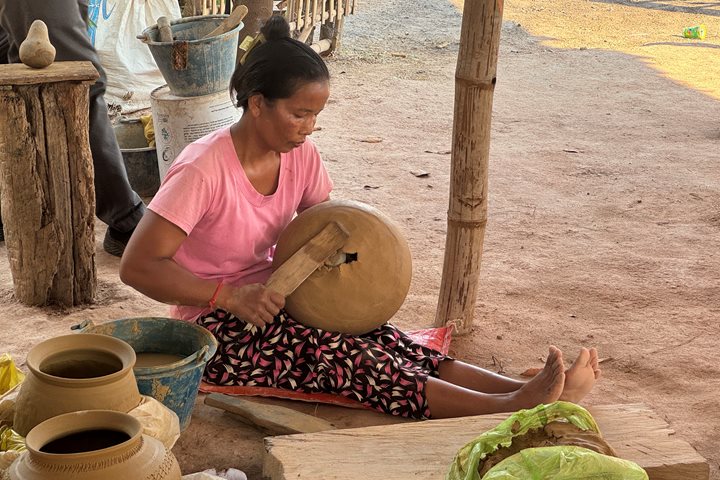Last night we docked upstream from the capital of Phnom Penh with the colourful light of the city lit in the distance. At dawn, our ship moved downriver to dock near Wat Phnom.
Today’s program takes us from the royal Khmer history of the royal palace, to ancient Khmer art at the National Museum of Cambodia, to learning about the country’s struggles during the Khmer Rouge regime of the 1970s.
We began adventuring through Cambodia using a popular local commuter tool called “cyclos.” Think reverse-tricycles with a cushioned seat for the commuter and a pedaling operator behind. The cycle provides guests (literally) a front-seat experience of the busy a.m. traffic of motorbikes, modern tuk tuks, and cars, meanwhile taking in the sights, sounds and smells of urban life in Cambodia.
After several quick local destination stops, we ended our commute before Cambodia’s royal palace. The impressive audience hall is found in the palace’s main courtyard. Cambodia’s King Sihamoni appeared to be presiding in the back palace. The second courtyard holds various royal dome-like structures called “stupas.”
The Silver Pagoda, named after its silver floor tiling, houses many Buddhist and ritual artifacts. One of the recent royal stupa contains the ashes of Princess Kantha Bhopa and her father’s ashes, King Sihanouk. The guided visit of the French-built National Museum of Cambodia lent us the opportunity to examine masterpieces of Khmer stone carvings and bronze sculpture work. Of interest are the 10th century sculptures from Koh Ker, which had recently been repatriated from well-known U.S. collections and auction houses.
Some guests visited the Tabitha Centre, a rural support program of assisting with wells and house building, started more than 20 years ago by Canadian Janne Ritskes. A variety of silk products from different communities were for sale here. The successful savings program has helped to create a basic living standard for thousands of families. However, Janne’s current focus is Nokor Tep, a hospital for women built outside Phnom Penh, with phase one scheduled to open March 18th, 2019.
While Jahan cruised further along the river, we enjoyed a barbeque buffet on deck, followed by a performance by dance troupe accompanied by a small orchestra and singer. The program, supported by Cambodia Performing Arts, was a combination of traditional classical ballet and fast-paced and humorous folk dance.







